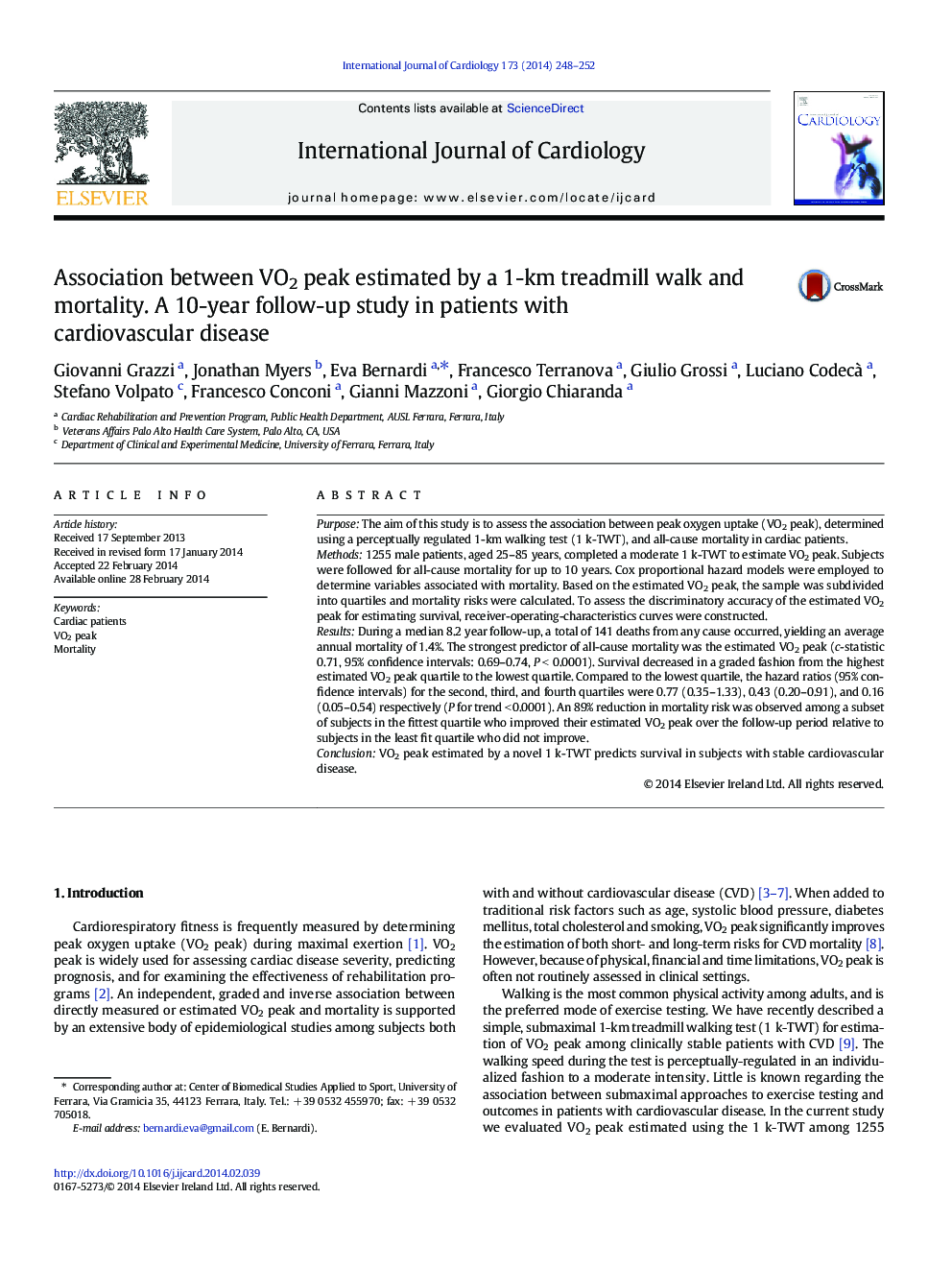| Article ID | Journal | Published Year | Pages | File Type |
|---|---|---|---|---|
| 5972261 | International Journal of Cardiology | 2014 | 5 Pages |
PurposeThe aim of this study is to assess the association between peak oxygen uptake (VO2 peak), determined using a perceptually regulated 1-km walking test (1Â k-TWT), and all-cause mortality in cardiac patients.Methods1255 male patients, aged 25-85Â years, completed a moderate 1Â k-TWT to estimate VO2 peak. Subjects were followed for all-cause mortality for up to 10Â years. Cox proportional hazard models were employed to determine variables associated with mortality. Based on the estimated VO2 peak, the sample was subdivided into quartiles and mortality risks were calculated. To assess the discriminatory accuracy of the estimated VO2 peak for estimating survival, receiver-operating-characteristics curves were constructed.ResultsDuring a median 8.2Â year follow-up, a total of 141 deaths from any cause occurred, yielding an average annual mortality of 1.4%. The strongest predictor of all-cause mortality was the estimated VO2 peak (c-statistic 0.71, 95% confidence intervals: 0.69-0.74, PÂ <Â 0.0001). Survival decreased in a graded fashion from the highest estimated VO2 peak quartile to the lowest quartile. Compared to the lowest quartile, the hazard ratios (95% confidence intervals) for the second, third, and fourth quartiles were 0.77 (0.35-1.33), 0.43 (0.20-0.91), and 0.16 (0.05-0.54) respectively (P for trend <Â 0.0001). An 89% reduction in mortality risk was observed among a subset of subjects in the fittest quartile who improved their estimated VO2 peak over the follow-up period relative to subjects in the least fit quartile who did not improve.ConclusionVO2 peak estimated by a novel 1Â k-TWT predicts survival in subjects with stable cardiovascular disease.
